
Some years ago, I had the opportunity to interview several senior citizens from the Nicoya peninsula who are more than a hundred years old, and I was surprised that in several of their stories, they described a gulf crisscrossed by sailboats, small ships that sometimes went down the rivers and traded merchandise between the islands.
The image seems to be a thing of the past, but not completely. Traditional boat building and navigation techniques remain alive in the non-profit association Astillero Verde (Green Shipyard).
Astillero Verde is located in Punta Morales at the entrance to the Gulf of Nicoya. Here Sail Cargo is building the Ceiba, a zero-emissions wooden sailboat for transporting maritime cargo.
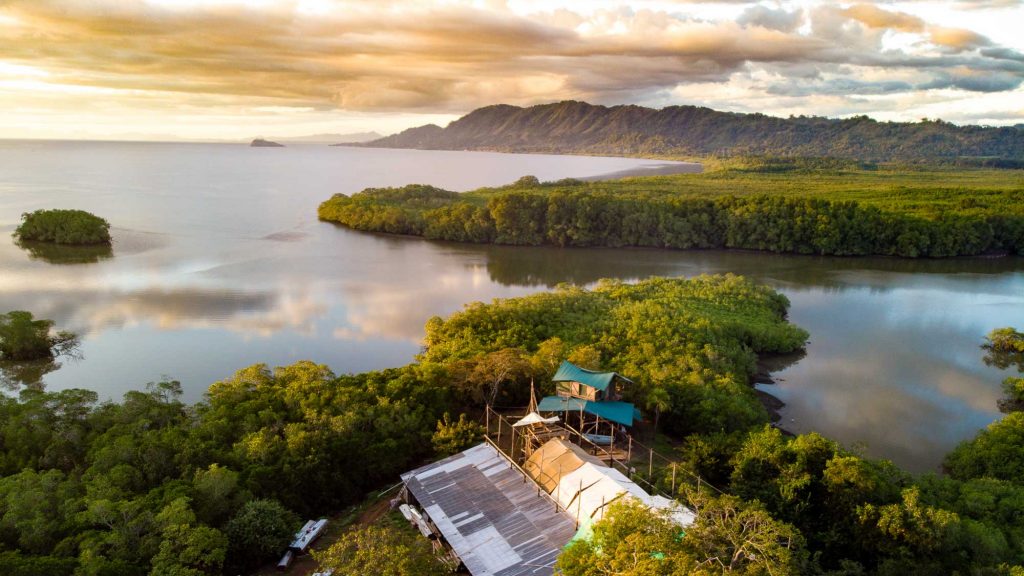
Facing the sea, tucked among mangroves, this is how the Ceiba is being built in Astillero Verde, Punta Morales. Credit: José Pablo PorrasPhoto: José Pablo Porras
The Ceiba will be 45 meters (147 feet) long and will have three masts with an estimated height of 35 meters (115 feet) above deck, but its most remarkable characteristic is that it will be built using traditional techniques. In addition, it will house an electric motor, which will allow it to carry out docking maneuvers or to set sail even when the forces of the wind don’t allow it to navigate with the sails alone.
It’s a fusion between traditional technique and technological progress.
Talking about using a sailboat to transport goods seems like an anachronism, even more so if we’re talking about a boat made of wood.
The benefits of wind propulsion are understandable, but we’re still left with the question: why build the boat out of wood? The answer has to do with the effects of container shipping and the dynamics of the global economy.
The maritime industry produces a high carbon footprint. Large ships not only generate emissions but also leave waste in the sea. Just making it from steel has a profound environmental impact if we take into account that the useful life of large steel ships is barely a couple dozen years.
Then they go to die in large ship cemeteries, where they are scrapped, or in other words, dismantled. This process generates more pollution and labor exploitation dynamics in the countries that receive them.
The fiberglass with which small boats are made isn’t harmless either. As time passes, it wears out and leaves micro residues in the water.
Therefore building out of wood, with a reforestation plan, is a way to drastically reduce the impact of boats. Also, wood boats can have a useful life of more than 100 years with proper maintenance.
That being said, the cargo capacity of a sailboat will never match that of large cargo ships. However, Sail Cargo’s director of corporate strategy, John Porras, affirmed that it’s not just about proposing a different form of shipping. It’s also about promoting a different consumption, being aware of the environmental and social costs of the things we buy.
As he put it, “The Ceiba is called on to serve markets that don’t have space in the dynamics of large-scale maritime shipping, [such as] small producers, carbon-neutral producers, fair trade.”
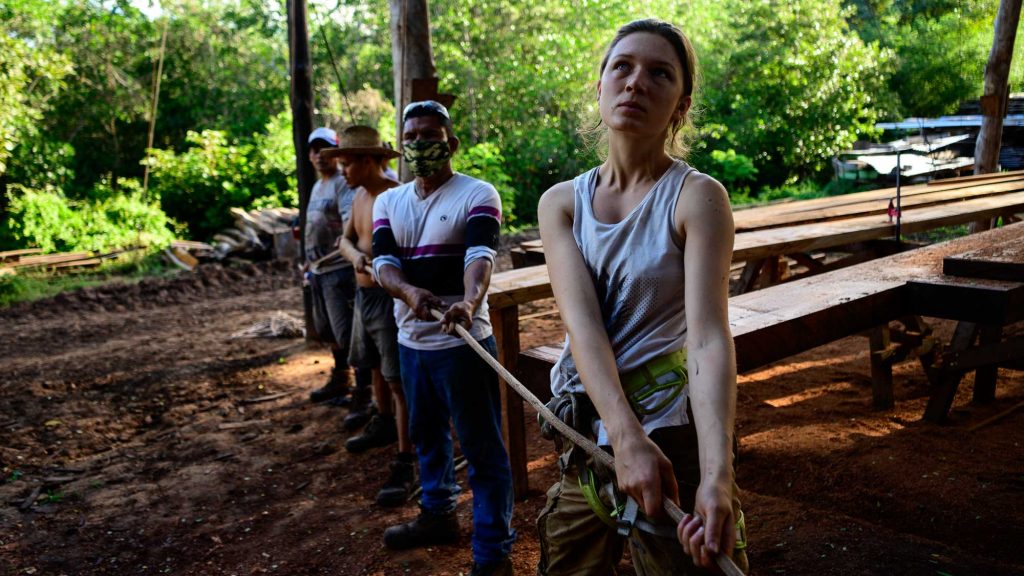
At Astillero Verde, there are no gender differences when it comes to working. Here the team prepares to lift one of the boat’s ribs. Credit: José Pablo PorrasPhoto: José Pablo Porras
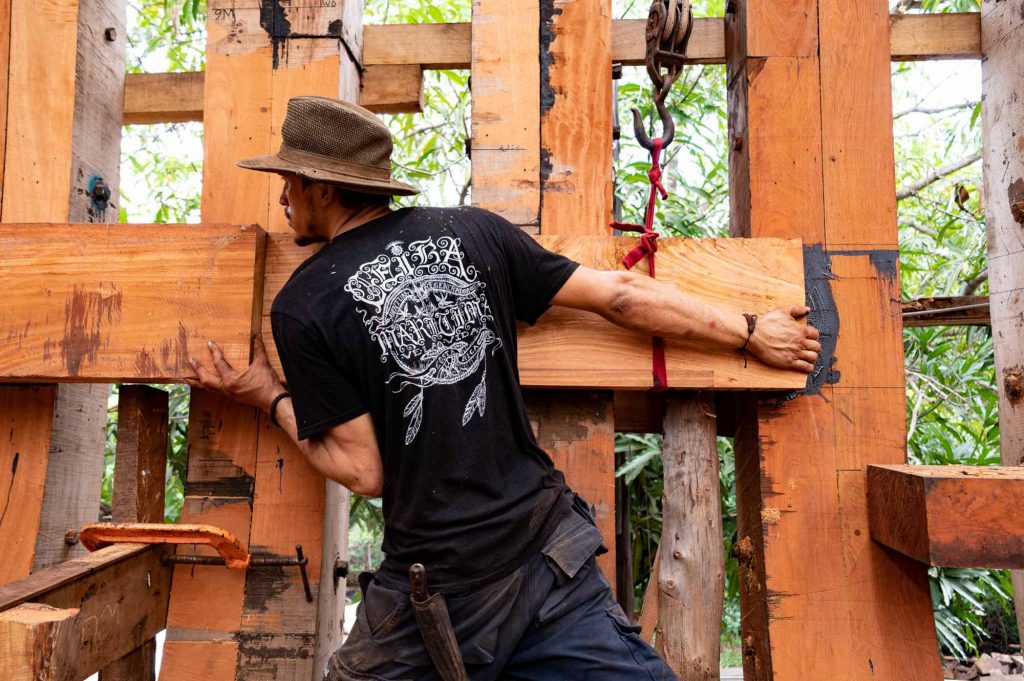
Logan McManus grew up in Costa Rica and worked in boat building in the Netherlands. He says that the techniques are the same. What’s different is the scale of the sailboat. Credit: José Pablo PorrasPhoto: José Pablo Porras
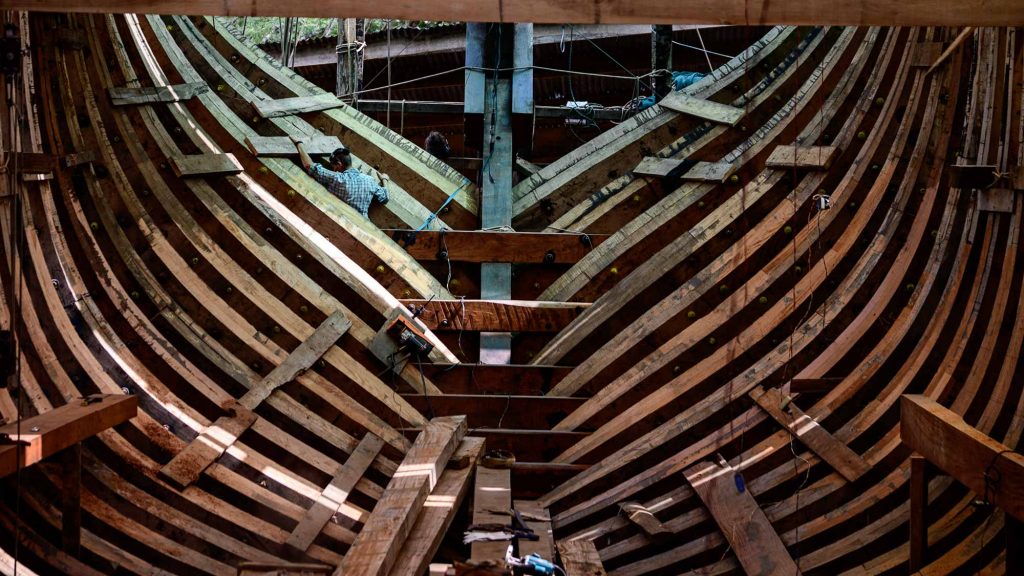
Asma Arbaoui is a professional sailor whose main role in the construction is related to the structure of the sails and masts. Credit: José Pablo PorrasPhoto: José Pablo Porras
These small markets can benefit from transporting goods in smaller volumes, which aren’t profitable for large ships.
A boat like the Ceiba can arrive at small ports and participate in the economy of coastal communities, which have been abandoned historically by central governments throughout Central America.
This isn’t simply a collateral benefit of sailing. It’s part of the philosophy behind the project and is the objective pursued by Astillero Verde, beyond building boats.
A “School” on the Shore
The Ceiba is the most striking part of a project that has many links. Astillero Verde is the one directly linked to the communities of the Gulf of Nicoya.
The idea is for Astillero Verde to become a learning center that can promote not just the construction of boats for different uses, but also navigation by sailing,” added John Porras.
The construction team is led by foreigners, from countries with a tradition in sailing and building sailboats, but as time passes, more workers from the community of Punta Morales have joined, motivated more than anything else by the desire to learn.
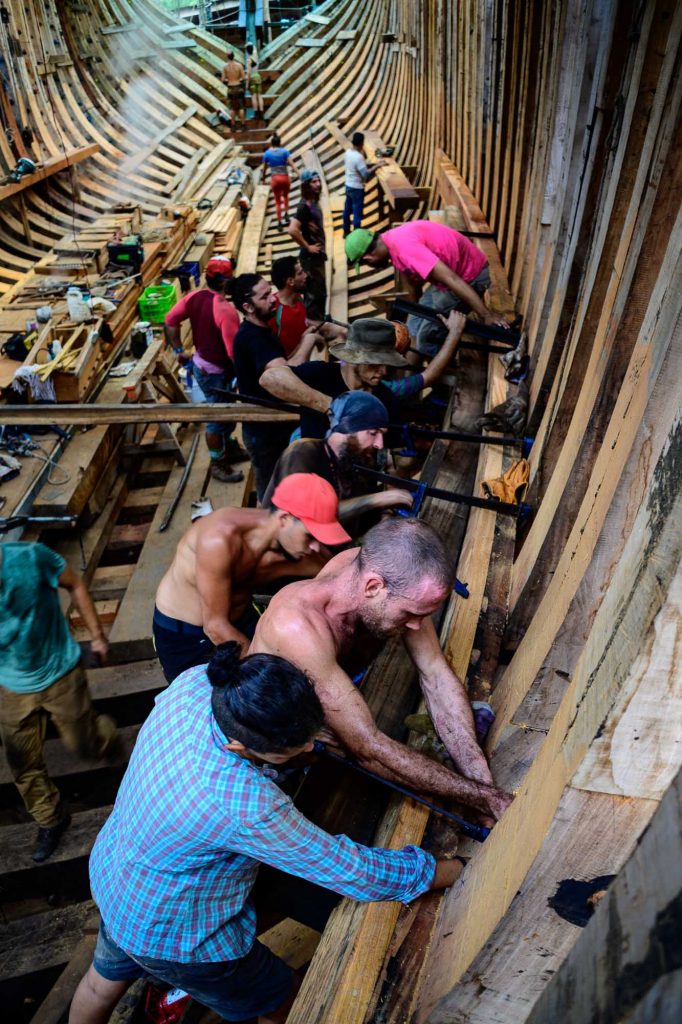
Building the Ceiba is a team effort. Mounting the large pieces of wood requires all hands on deck. Credit: José Pablo PorrasPhoto: José Pablo Porras
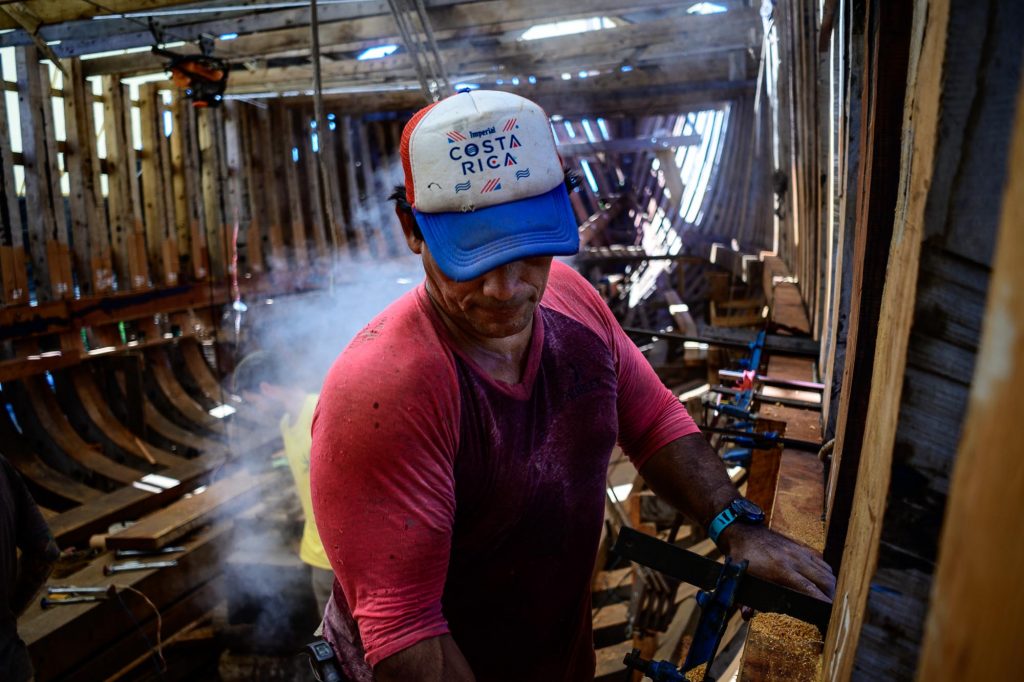
Misael Ledezma adjusts one of the pieces of wood in the rib frame. Steam is used to soften the wood to be able to shape the hull. Credit: José Pablo PorrasPhoto: José Pablo Porras
Right now, there are 16 Costa Ricans working in the shipyard, in addition to having collaboration from a couple of local women’s associations.
Francisco García and Yamileth Espino are examples of this. He came to work as a welder and she was cleaning. Now they are both working in the sawmill. Yamileth, for her part, has been interested in learning more about building boats. On my last visit to the shipyard, I learned that she is being trained in advanced boat building techniques along with other “apprentices.”
The pandemic also brought new people here who worked in canopy tours or as research assistants in projects being conducted in tree canopies and have moved from higher elevations to the coast to find employment in the shipyard.
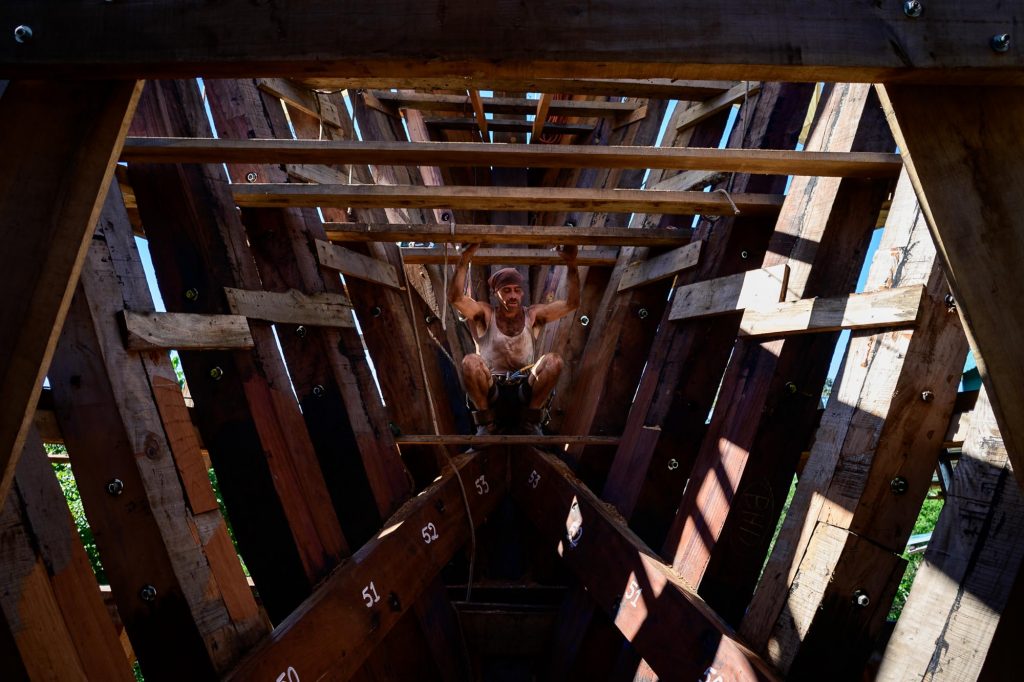
Nicolás Trochon, from France, works on the upper part of the hull. He is responsible for the structural details of the boat’s bow. Credit: José Pablo PorrasPhoto: José Pablo Porras
Could Astillero Verde become the driving force behind a more stable economy in the area? There isn’t data to back that up, but it’s possible to imagine the potential scope of a disruption of this sort in our coastal towns. It’s not just about creating jobs. It’s also about the possible effect on identity and the relationship that our society has established with its coastlines.
A Gulf Crisscrossed by Sailboats
The construction of the Ceiba makes me think of the strange role that the coast plays in the Costa Rican identity.
On the one hand, our national coat of arms highlights our location between two oceans, and on the other, as the writer Fabian Coto made me see, Costa Rican literature practically ignored the coasts until the middle of the 20th century. The story of national identity is built around the farmer stuck in the mountains.
This contradiction persists to this day. More than half of the population is concentrated in the Central Valley. The coast is seen as an exotic place to visit during holidays or weekends. Thinking about the fact that our territorial waters are eleven times more extensive than our land surface area is dizzying, because we don’t know what to do with them.
In the National Library, there’s a document from 1892, Studies of the Gulf of Nicoya, Cocos Bay and the Gulf of Culebra, a report by Eliseo P. Fradin, captain of the French Navy, who concluded: “Geographically, the Gulf of Nicoya can rival the most beautiful ports in the world; and Costa Rica can consider this part of its territory as one of the richest jewels in its crown.”
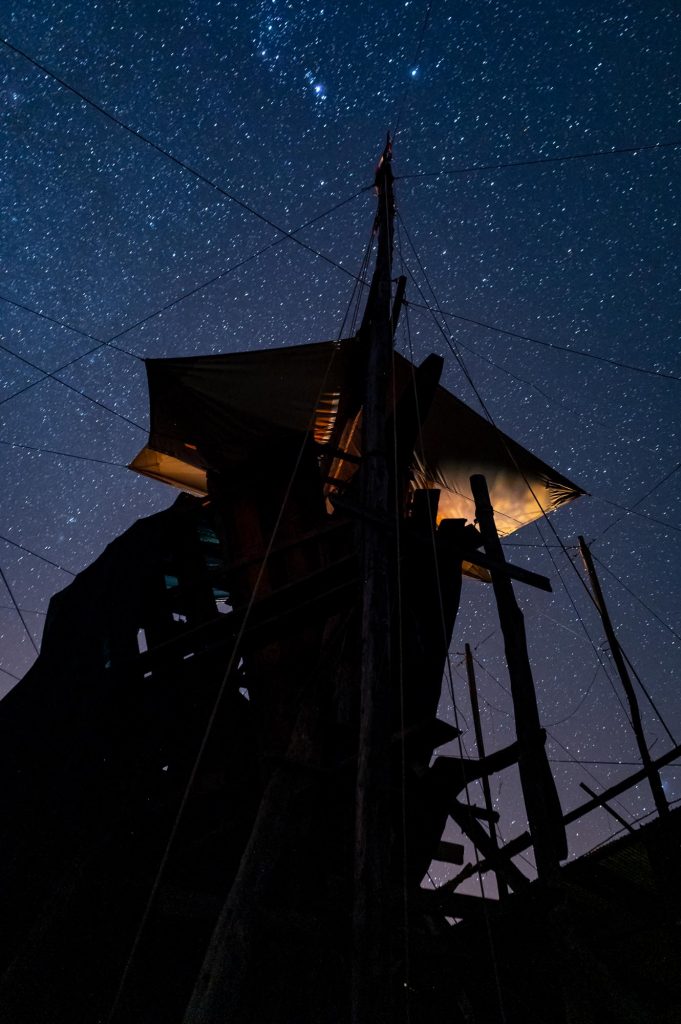
The Ceiba’s prow under the stars. Thinking about times past, when navigation depended on the stars, is inevitable. Credit: José Pablo PorrasPhoto: José Pablo Porras
The world has changed since that study was written, but the conditions of what is now known as nautical tourism haven’t. Nautical tourism has been developed successfully in other parts of the world, ranging from small cruises to renting boats for recreational navigation.
Sometimes when I look at the gulf from the mountains of the Sierra in Tilaran, I try to imagine what it would look like crisscrossed by boats sailing in all directions. If I concentrate hard enough, I can taste the salt in the air, and the wind carries voices to me from the ground. When I snap out of the reverie, I just see the empty gulf.
It’s not difficult to dream of developing our coasts in a different way. The challenge is to overcome the political barriers that have deepened the inequality between the center and the periphery of the country.
When I started following the subject of shipbuilding, I asked Danielle Dodget, director of Sail Cargo and captain of the Ceiba, about her personal motivations. She told me, “When you are working on a boat that moves just with the wind, it is very impressive. It’s wonderful seeing people learning this for the first time, and experiencing it, hoisting the sails together, seeing them experience the ocean in a different way.”
Jose Pablo Porras Monge (JP Monge)
Photographer, documentary film director and writer based in La Sierra in Abangares.
If you are interested in reading a more personal chronicle and seeing more photographs about the construction of the Ceiba and daily life in Astillero Verde, you can visit: ImágenesHumanas.com


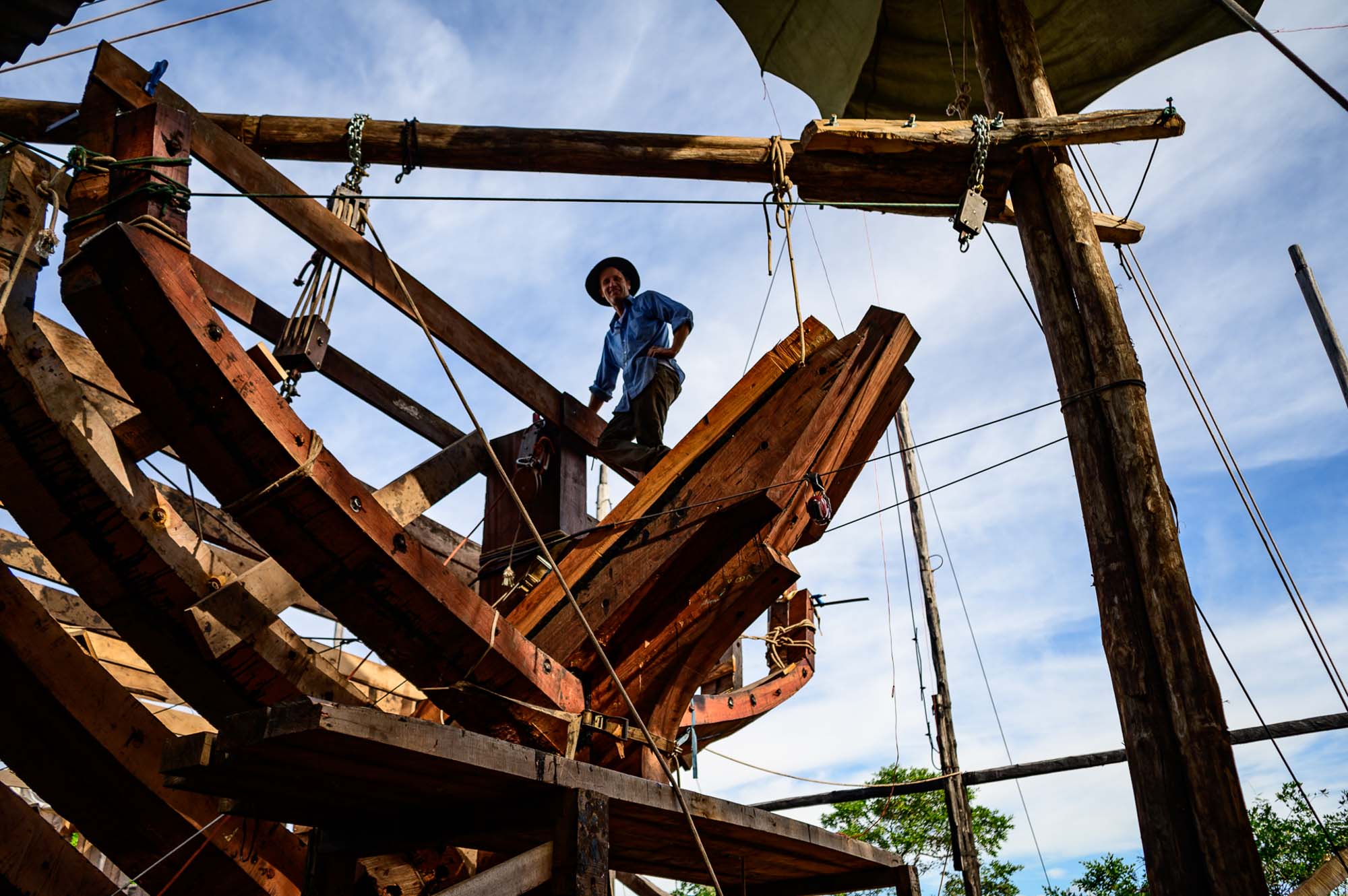
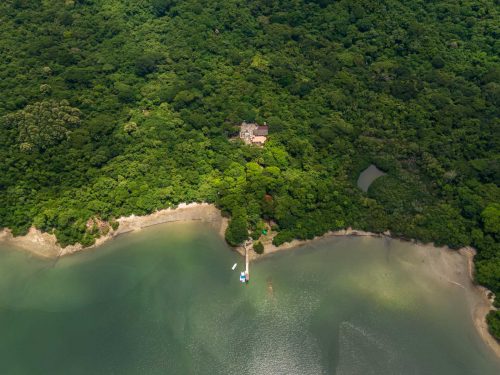
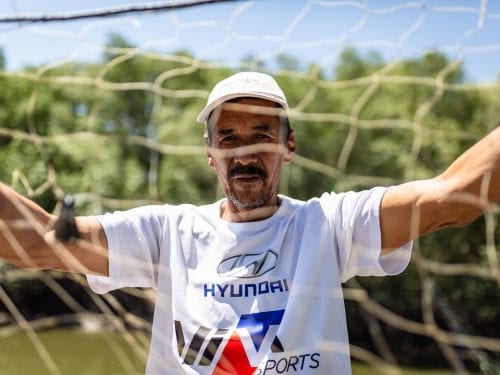
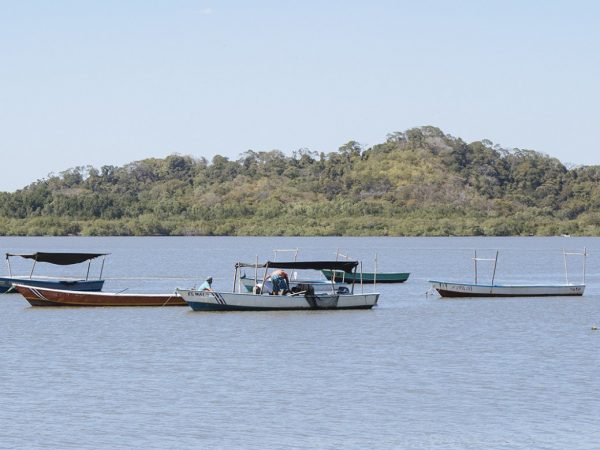

Comments